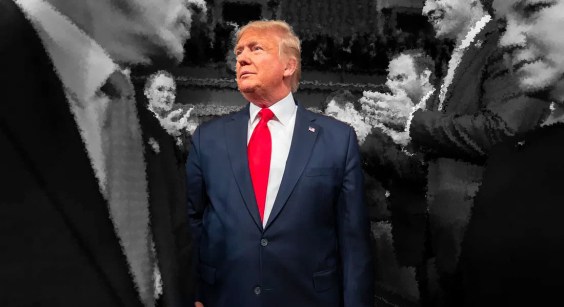 A 5-Fulton bus turns onto Market, where it enjoyed a privileged status today. Photo: Michael Rhodes
A 5-Fulton bus turns onto Market, where it enjoyed a privileged status today. Photo: Michael RhodesIt's been half a century since the "roar of the four" streetcar lines dominated Market Street, but with the Market Street traffic diversion trial in effect today, trains and buses reasserted themselves over automobiles as the uncontested dominant vehicles on the city's main thoroughfare. With eastbound automobiles forced to turn right at 6th and 8th Streets, the roar of the four subterranean transit tracks - BART and Muni Metro - was easily audible in certain spots. For the first time, subways, streetcars, and buses included, San Franciscans could hear the roar of the eight.
Best of all, those buses and streetcars were running much more smoothly than usual.
"Muni drivers love it," said an operator on the 21-Hayes bus line. Muni drivers on virtually every line that travels on the affected area of Market seemed to agree.
The F-line was running notably smoother, said an inspector who rode the historic streetcar line throughout the morning and afternoon. It had just one delay today, which happened at Fisherman's Wharf, he said. The reduced congestion made it much easier for the streetcars to stay on schedule.
 Immediately east of 6th and 8th Streets, Muni vehicles now face virtually no congestion. Photo: Michael Rhodes
Immediately east of 6th and 8th Streets, Muni vehicles now face virtually no congestion. Photo: Michael RhodesThe Muni inspector said he noticed two other differences today. For one, the outbound F-line trips were quicker than usual. The Muni Metro subway lines also seemed more packed than usual, both in the morning and afternoon, he said, speculating that people with the option of driving or riding transit may have switched modes because of the trial.
Even though the F-line and most buses run in transit-only lanes in the center of Market through the affected stretch, he said the lack of cars cutting in illegally made a big difference.
Other drivers interviewed on the 5-Fulton, 21-Hayes, and 71-Haight-Noriega nearly all used the same term - "smoother" - to describe their trips today. The lunchtime mini-rush hour was indeed smooth, said a 21-Hayes operator, who had heard from another driver that the morning commute, normally very congested, "was a lot quicker."
"So far, I like it," he added.
In spite of a block-long queue of cars turning right at 8th Street, none of the Muni lines appeared to be affected, since they could zip through the center lane. A 5-Fulton driver said that the backup wasn't a problem for him, since his line makes curbside stops at 5th and 7th Streets, but not at 6th or 8th, the forced-turnoff streets.
 The SFPD enforced right turns at 6th and 8th Streets. Photo: Michael Rhodes
The SFPD enforced right turns at 6th and 8th Streets. Photo: Michael RhodesMTA spokesperson Judson True also said that anecdotally, Market Street was smoother for Muni vehicles, and the right-turning cars didn't create a problem. The MTA is collecting data on the trial's impacts and will eventually analyze the effects in greater detail.
Katie Acheson, a rider on the 21-Hayes, said she hadn't heard about the Market Street trial changes, but that her ride did seem faster. "It's gone pretty quickly," said Acheson, who rides the line daily.
The anecdotal evidence from Day One confirmed that, unsurprisingly, reducing congestion greatly reduced delay for Muni vehicles. Only yesterday a chaotic jumble of cars, buses and bikes, mid-Market was easily transformed overnight into a transit-first environment, with buses and trains roaring along smoothly.





